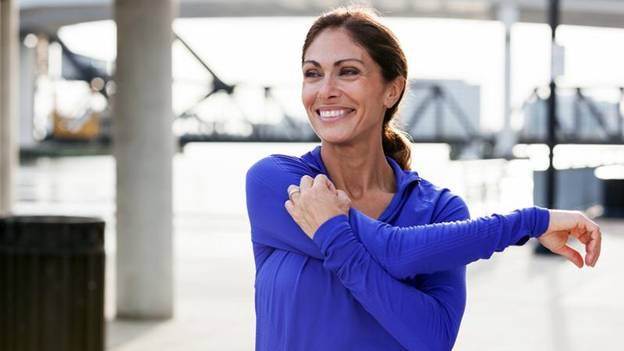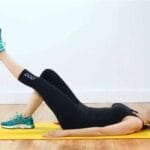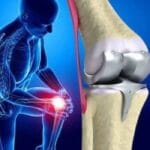Recovering arm mobility after an injury is a critical aspect of rehabilitation that involves a multifaceted approach. Whether you’ve experienced a fracture, dislocation, tendon injury, or surgery, restoring your arm’s range of motion and strength is essential to regain full function and prevent long-term complications. This comprehensive guide outlines the latest strategies and techniques for improving arm mobility in 2024, covering everything from physical therapy to advanced rehabilitation exercises, and addressing frequently asked questions.
Understanding Arm Mobility and the Impact of Injury
Arm mobility refers to the range of motion (ROM) in the shoulder, elbow, wrist, and hand joints. An injury can significantly impair this mobility, leading to stiffness, pain, and functional limitations. The severity of the mobility loss depends on factors like the type and location of the injury, the patient’s age, and the overall health condition.
Key Components of Arm Mobility:
- Range of Motion (ROM): The ability of the joints to move in different directions.
- Strength: The muscular power that supports joint movement.
- Flexibility: The elasticity of muscles and tendons allowing full movement.
- Coordination: The smooth, controlled motion of the arm during activities.
Step-by-Step Approach to Regaining Arm Mobility
Start with Physical Therapy
Physical therapy is the cornerstone of rehabilitation after an arm injury. A skilled physical therapist will evaluate your injury, assess your current mobility, and develop a personalized therapy plan to address your specific needs. This plan typically includes a combination of passive and active exercises, manual therapy, and other modalities like ultrasound or electrical stimulation to promote healing and reduce pain.
Components of Physical Therapy:
- Passive Range of Motion (PROM): The therapist moves your arm to gently stretch and mobilize the joints.
- Active Range of Motion (AROM): You move your arm with the guidance of your therapist, gradually increasing the range and intensity.
- Strengthening Exercises: Focused on rebuilding muscle strength around the injured area.
- Manual Therapy: Techniques like massage and joint mobilization to reduce stiffness and improve flexibility.
Incorporate Mobility Exercises
Mobility exercises are designed to gradually increase the range of motion in the affected joints. These exercises should be performed regularly to prevent stiffness and maintain progress in your recovery. Here are some effective exercises for improving arm mobility:
- Pendulum Exercises: Gentle, circular movements to keep the shoulder joint active.
- Cross-Body Arm Stretch: Stretches the shoulder muscles to improve flexibility.
- Wall Crawls: Helps regain shoulder elevation and reach.
- Elbow Flexion and Extension: Restores full movement in the elbow joint.
Perform these exercises under the supervision of a therapist initially, then continue them at home as part of your daily routine.
Advanced Rehabilitation Techniques
For more severe injuries or surgical recovery, advanced rehabilitation techniques may be required. These include:
- Robotic-Assisted Therapy: Uses robotic devices to guide arm movements, ensuring precision and helping patients regain function faster.
- Virtual Reality (VR) Therapy: Immersive environments that simulate real-life scenarios, aiding in motor recovery and coordination.
- Dynamic Splinting: Adjustable splints that apply a constant force to the joint, helping restore the range of motion gradually.
These advanced therapies are particularly useful in cases of severe trauma or post-operative recovery, providing targeted support to enhance mobility and reduce recovery times.
Use of Assistive Devices and Bracing
In some cases, assistive devices such as braces, slings, or splints may be necessary to protect the arm during the early stages of recovery. Custom-fitted orthotics can also help support the joint, reduce pain, and prevent further injury while allowing you to perform daily activities.
Nutritional Support and Hydration
Proper nutrition plays a vital role in the recovery process. A diet rich in protein, vitamins, and minerals supports tissue repair and overall healing. Staying hydrated is also essential, as it helps maintain the elasticity of muscles and tendons, which is critical for joint mobility.
FAQs: Addressing Common Concerns
Q1: How long does it take to regain full arm mobility after an injury?
- The timeline for recovery varies depending on the severity of the injury and the type of treatment. For minor injuries, full mobility can often be regained within a few weeks with consistent therapy. More severe injuries or surgical recoveries may take several months to a year.
Q2: Can I perform mobility exercises on my own, or do I need supervision?
- Initially, it is crucial to perform exercises under the supervision of a physical therapist to ensure proper technique and avoid re-injury. Once you are familiar with the exercises, you can continue them at home as part of your daily routine.
Q3: Are there any risks associated with mobility exercises?
- When done correctly, mobility exercises are safe and beneficial. However, if performed improperly or too aggressively, they can lead to further injury. Always follow your therapist’s guidelines and stop if you experience pain beyond mild discomfort.
Q4: Is surgery always required to regain mobility after a severe arm injury?
- Not necessarily. Many severe arm injuries can be managed with non-surgical interventions, including physical therapy, bracing, and advanced rehabilitation techniques. Surgery is typically considered when these methods fail to restore function or when the injury involves significant structural damage.
Q5: How can I prevent further injury while recovering?
- Prevent further injury by following your therapist’s advice, avoiding high-impact activities until fully recovered, using assistive devices as needed, and gradually increasing the intensity of your exercises.
Conclusion
Improving arm mobility after an injury is a process that requires dedication, consistency, and the right approach. By combining physical therapy, targeted exercises, advanced rehabilitation techniques, and proper nutrition, you can regain full function and return to your normal activities. Always consult with your healthcare provider to tailor the best recovery plan for your specific needs.





